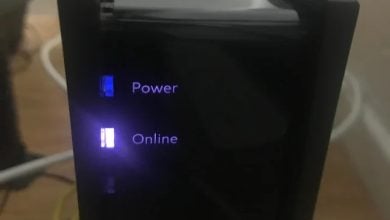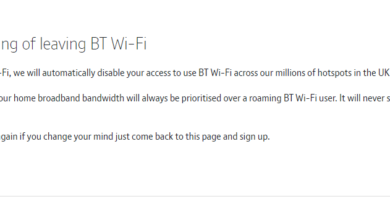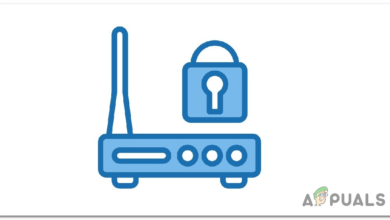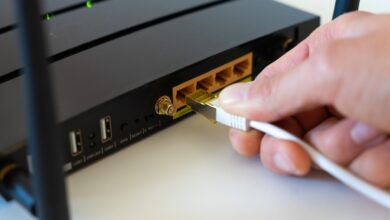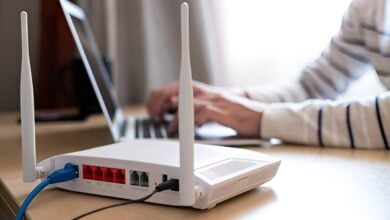Troubleshoot Common AT&T Internet Problems (All Fixes)
The internet suddenly disconnects, websites stop loading, and your devices have trouble getting back online—these are common signs of ongoing AT&T connection problems mentioned on many forums. This usually happens when your gateway can’t keep a steady internet signal or assign an IP address properly.
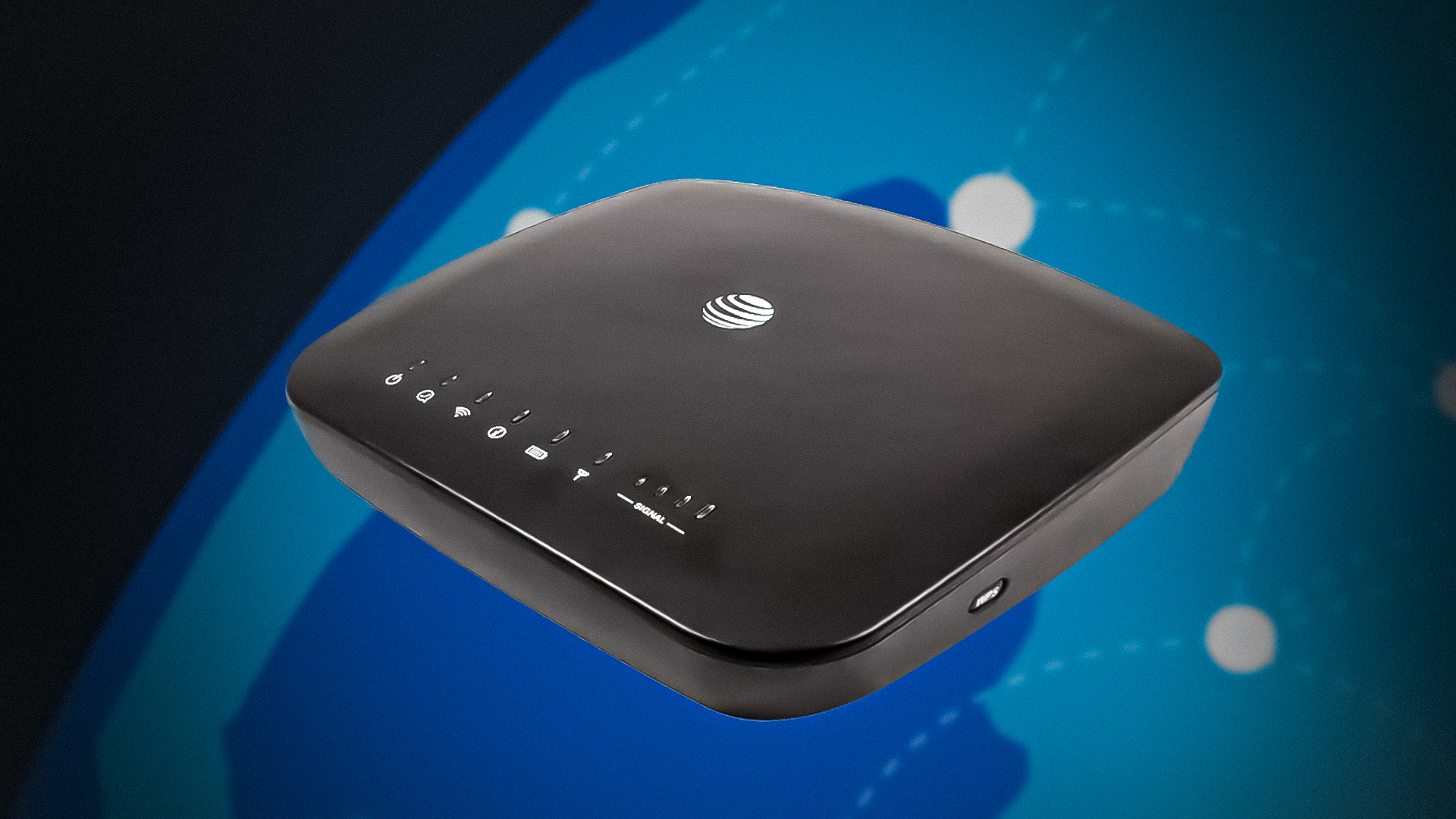
The most common cause is a weak or unstable fiber signal, often because of damaged outdoor cables, incorrect fiber setup, or interference on the line. Other possible reasons include outdated modem software, overloaded modems (especially with older BGW-210 models), or issues with the AT&T system setup on their end.
In this guide, we’ll go over the common causes of AT&T Internet problems and walk you through the solutions. But before following these steps, please make sure your AT&T account is registered—especially if your router’s broadband light is solid red.
1. Enable and Disable Network Communications on Your Device
AT&T Internet may not work if your device’s network modules are stuck or need a reset. Simply turning the network communications off and on can help restore the connection.
1.1. Enable and Disable Airplane Mode on an iPhone
- Open your iPhone’s Settings and turn on Airplane Mode.
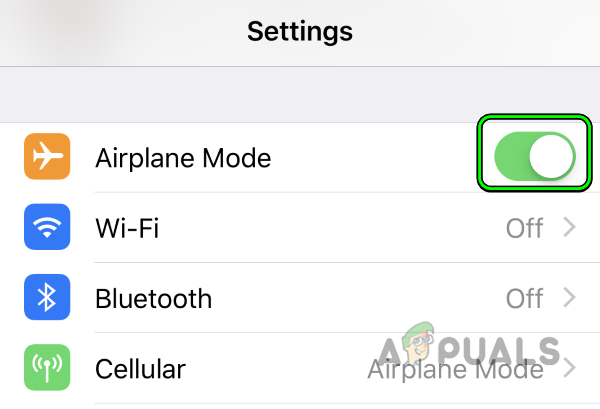
Enable Airplane Mode on the iPhone - Wait about a minute, then turn Airplane Mode off. Check if your AT&T Internet is now working.
1.2. Disable and Enable the Network Connection on a Windows PC
- Right-click on the network or Wi-Fi icon in your computer’s system tray and select Network & Internet Settings.
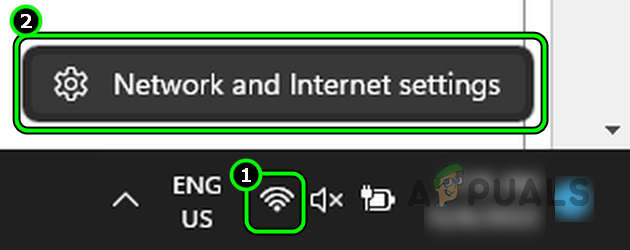
Open Network and Internet Settings of the Windows PC - Scroll down and click Advanced Network Settings.
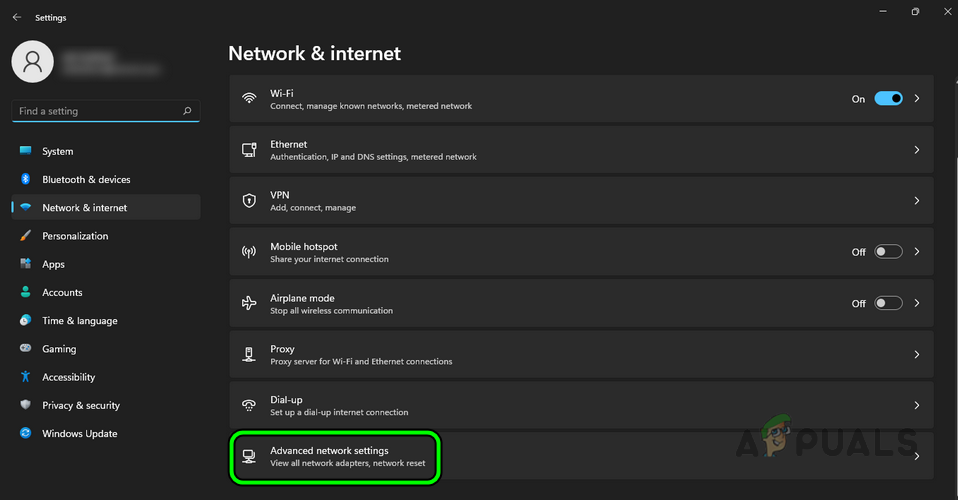
Open Advanced Network Settings in the Windows Settings - Disable the network adapter (either Wi-Fi or Ethernet) by clicking “Disable” next to it.

Disable Wi-Fi Network Adapter in the Windows Settings - Wait a minute, then enable the adapter again. Check if AT&T Internet is now working.
2. Reinsert the SIM Card in Your Mobile Phone
If your SIM card isn’t communicating correctly with the AT&T network, your mobile data might not work. Removing and reinserting the SIM card can help reestablish the link with the cell tower.
- Remove the SIM card from your phone and wait five minutes.
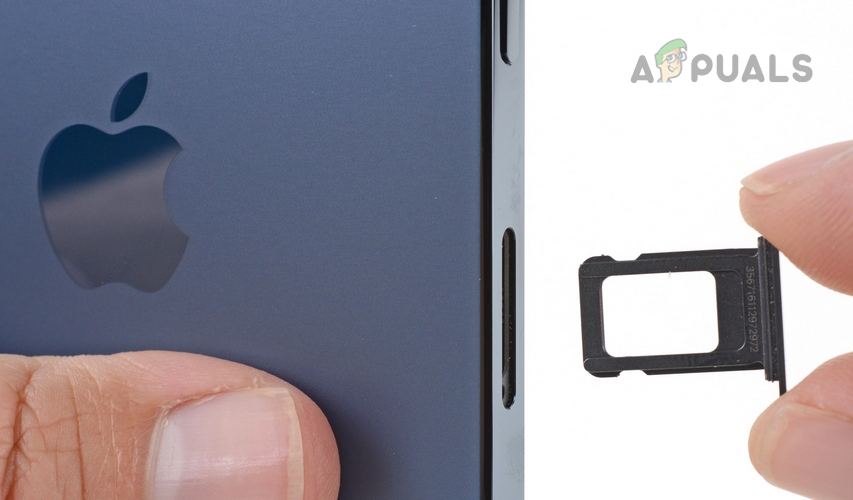
Remove SIM Card from iPhone - Reinsert the SIM card and check if AT&T Internet is working again.
If this doesn’t work, make sure your phone is compatible with the AT&T network.
3. Restart Your Device and Networking Equipment
If either your device or your network equipment (like your router) is acting up, restarting them can clear up most connection problems.
- Restart your mobile phone and see if that resolves the issue.
- If you’re still having trouble, restart your AT&T router as well.
- If issues continue, power off your device, unplug its power cable (or remove the battery if possible).
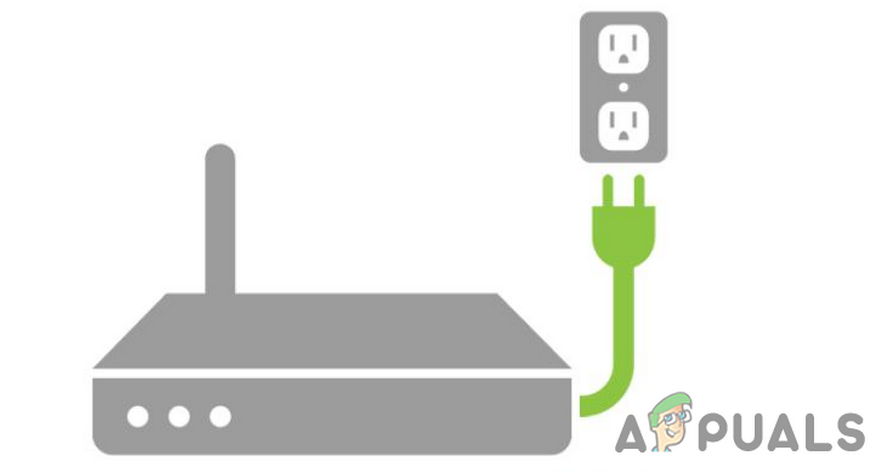
Unplug Your Router from the Power Source - Disconnect any other devices that might be linked (such as a DVR connected to a TV).
- Power off the router and unplug its power cord.
- Wait about 5 minutes, then plug the router back in.
- Turn on the router and reconnect all your devices. Check if the problem is fixed.
4. Update Your Phone’s Carrier Settings
If your carrier settings are outdated on your phone, it may have trouble communicating with AT&T’s network towers. Updating these settings often solves mobile data issues.
To do this on an iPhone:
- Go to Settings > General > About.
- If prompted that a carrier update is available, tap Update.
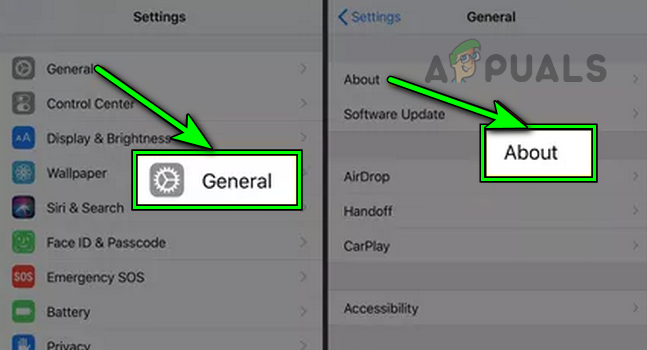
Open About in the General iPhone Settings - After the update installs, restart your iPhone and check if AT&T Internet is working.
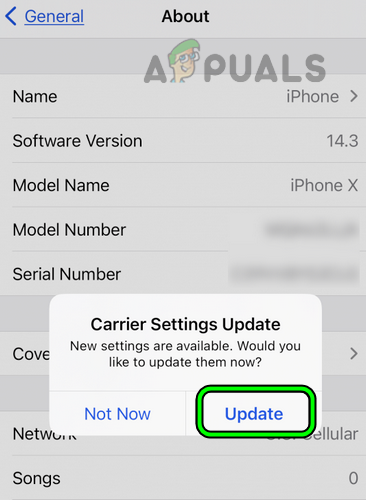
Update the Carrier Settings of Your iPhone
5. Clear the Alternate MAC Address (for Xbox)
On Xbox consoles, an Alternate MAC address can sometimes cause connection issues if it’s not needed by your AT&T router. Clearing this address often solves network problems.
- Go to Profile & System > Settings > General > Network Settings > Advanced Settings.
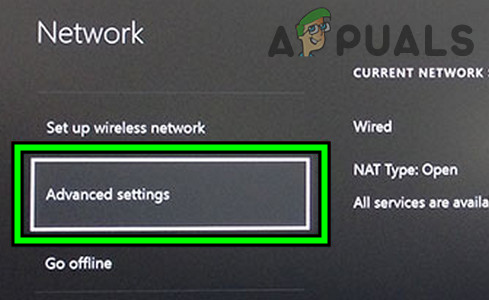
Open Advanced Network Settings of Xbox - Select Alternate MAC address and choose Clear.
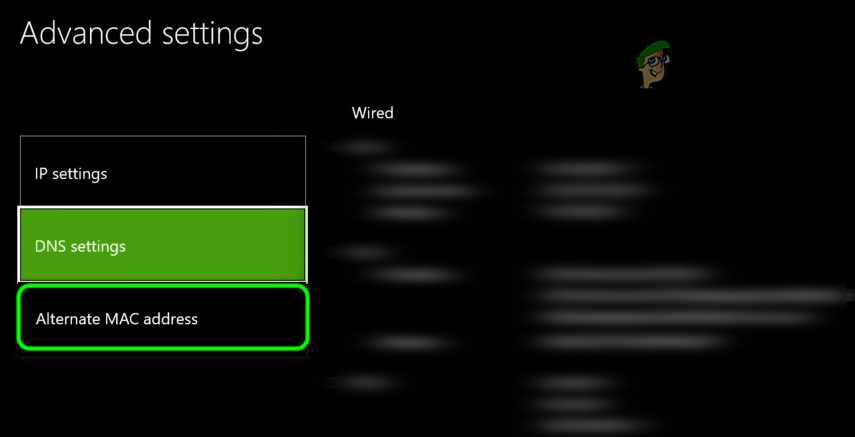
Select Alternate Mac Address in the Advanced Settings of Xbox - Select Restart. When the Xbox has rebooted, check if the AT&T Internet works on the Xbox.
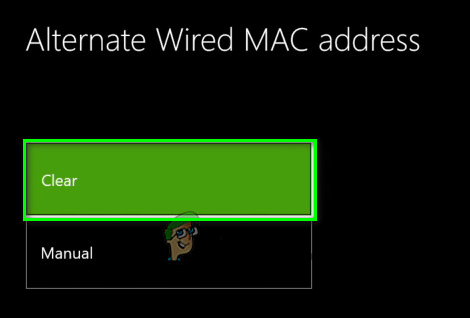
Clear Alternate Mac Address of Xbox
6. Update Your Router’s Firmware
If your router’s firmware (built-in software) is outdated, it might not work smoothly with AT&T’s network. Updating the firmware often brings fixes and enhancements that solve connection issues.
- Go to the admin portal of your AT&T router and log in.
- Find the AT&T Software Update area and click Check for Updates.
- If an update is available, follow instructions to install it.
- After updating, restart the router and your devices to check if the connection is now stable.
7. Disable IPv6 in the Router’s Settings
Not all of your devices or apps may support AT&T’s IPv6 network. If there are compatibility problems—or if AT&T’s IPv6 DNS servers aren’t responding—disabling IPv6 in your router settings is a good step.
- Log in to your router’s admin portal.
- Navigate to Settings > LAN or Home Network > IPv6.
- Disable IPv6 and save the changes.
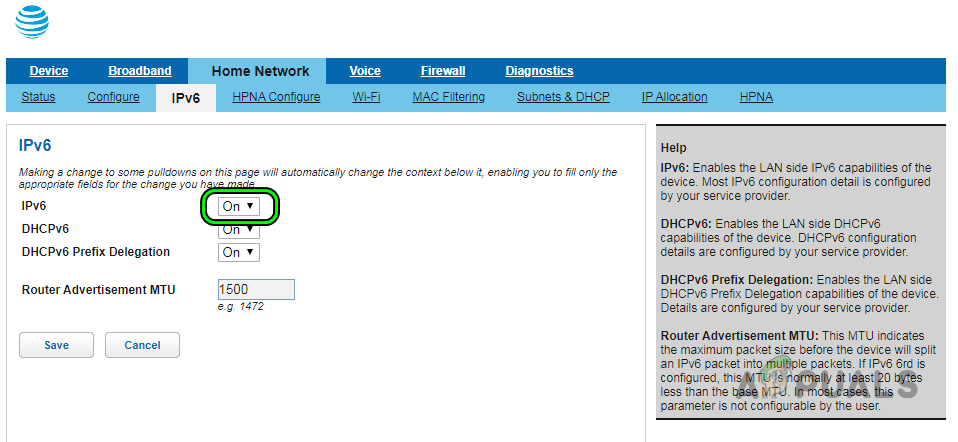
Disable IPv6 in the ATT Router’s Settings - Restart your router and devices. Check if the Internet connection has improved.
- If needed, you can also disable IPv6 in the settings of the affected device.
8. Disable AT&T Internet Security on the Router
Sometimes, AT&T Internet Security (built into the router) might mistakenly block some devices or web pages. Temporarily turning off this feature can help identify if it’s the cause.
- Download and install the AT&T Smart Home Manager app.
- Log in to the app with your AT&T credentials.
- Go to App Preferences and turn off AT&T Internet Security.
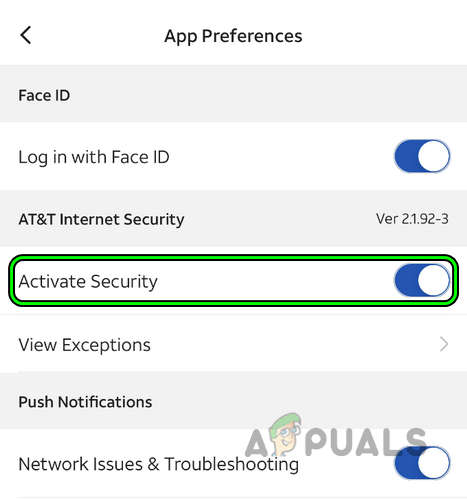
Disable AT&T Internet Security - After restarting your router and devices, check if the Internet is working normally.
If that doesn’t help—and a VPN is running on any device attached to your AT&T network—try turning off VPN on all devices. This can also resolve Internet issues.
9. Restore and Re-add the APN Settings on Your Phone
Access Point Name (APN) settings control how your mobile device accesses the Internet. If they’re incorrect, your mobile data will likely stop working. You can reset or re-enter these details as follows (on Android):
- Go to Settings > Wireless & Networks > Mobile Networks > Access Point Names.
- Tap Restore to Defaults (found by tapping the menu or three dots in the corner).
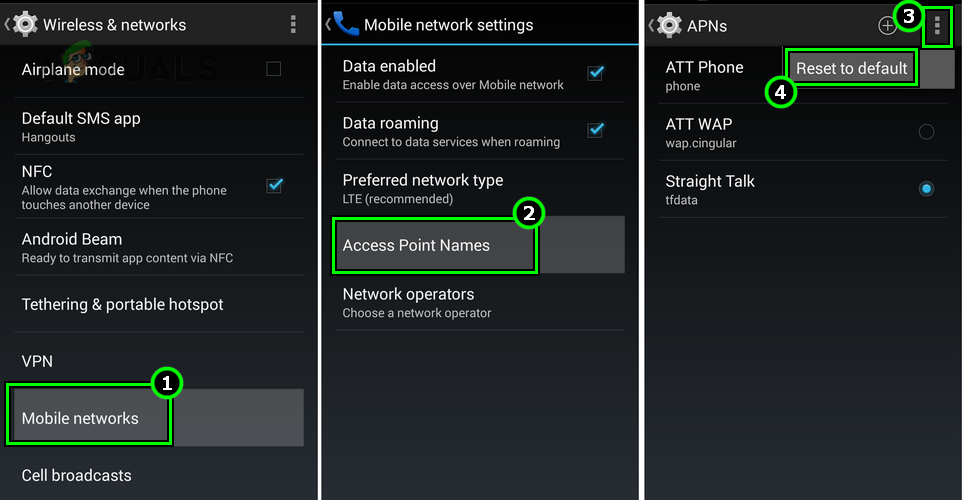
Restore Access Point Names to the Defaults in the Android Phone Settings - Confirm and restart your phone. See if your Internet now works.
- If not, tap to Add a New APN in the APN settings.
- Add the following details:
Name: NXTGENPHONE APN: NXTGENPHONE Proxy: Not set Port: Not set Username: Not set Password: Not set Server: Not set MMSC: http://mmsc.mobile.att.net MMS proxy: mobile.att.net MMS port: 80 MCC: 310 MNC: 410 Authentication type: None APN type: default,mms,supl,hipri APN protocol: IPv4 Bearer: Unspecified
- If you have a 5G-capable phone, you may need to set “Name” and “APN” to ENHANCEDPHONE and keep other details as above.
- Save your changes and restart your phone. Check if you can connect to the Internet.
- If you still have problems, set MNC to 280 and try again.
10. Change the DNS Settings of Your Devices
If your DNS (Domain Name System) isn’t set up properly, your devices won’t know how to reach websites. Changing your DNS to a well-known public service can often help (such as Google DNS).
- Right-click on your system tray’s Wi-Fi or network icon and select Network and Internet Settings.
- Choose Advanced Network Settings at the bottom.
- Select More Network Adapter Options under Related Settings. Right-click your network adapter (like Wi-Fi).
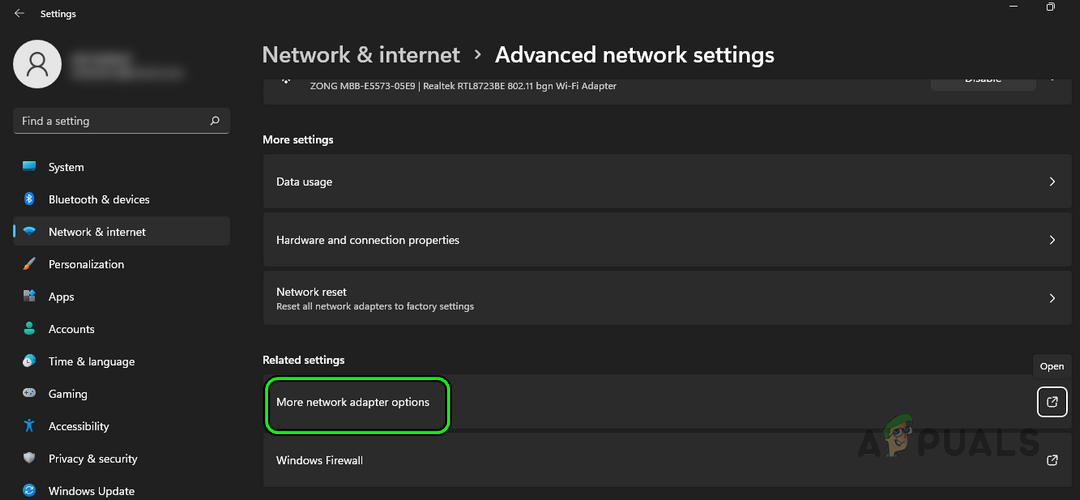
Open More Network Adapter Options in the Windows Settings - Click Properties and double-click Internet Protocol Version 4 (TCP/IPv4).
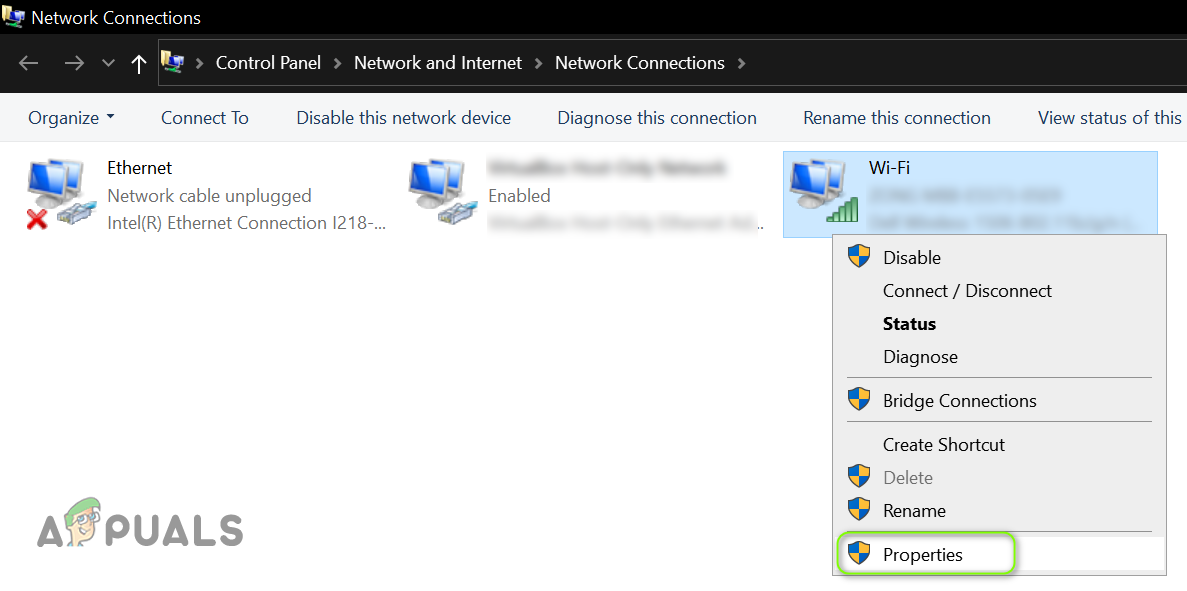
Open Properties of the Network Adapter - Select Use the Following DNS Server Addresses and enter:
Preferred DNS Server: 8.8.8.8 Secondary DNS Server: 8.8.4.4
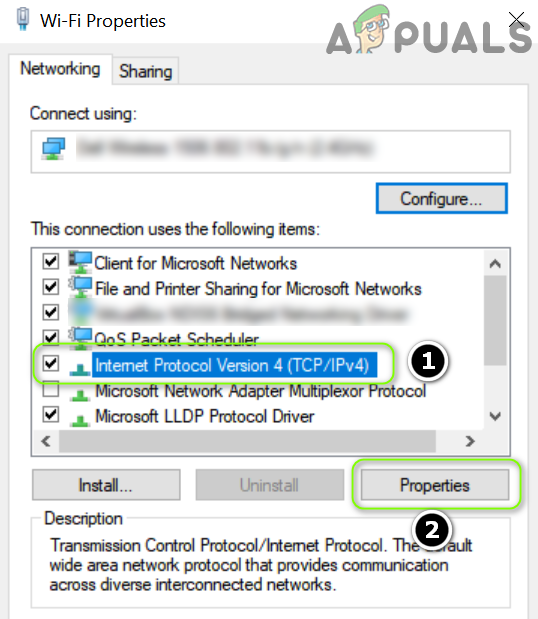
Open Properties of Internet Protocol Version 4 (TCP IPv4) - Click OK and check if your Internet problem is gone.
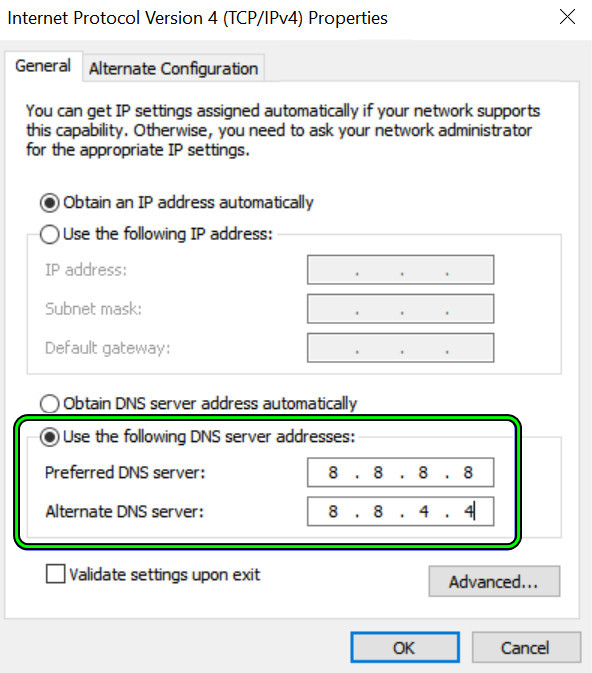
Change the DNS Server of Your PC - If you’re still having trouble, try adding these as IPv6 DNS servers:
2001:4860:4860::8888 2001:4860:4860::8844
If that still doesn’t help, changing the DNS in your router’s admin settings might do the trick (though it can affect AT&T Uverse devices).
11. Reset the Network Settings
Your device’s saved network settings can sometimes get corrupted or overloaded with incorrect data. Resetting them can give you a clean slate.
Be sure to write down any Wi-Fi passwords or other settings you might need to re-enter later.
11.1. For iPhone
- Go to Settings > General > Reset.
- Tap Reset Network Settings and restart your phone.
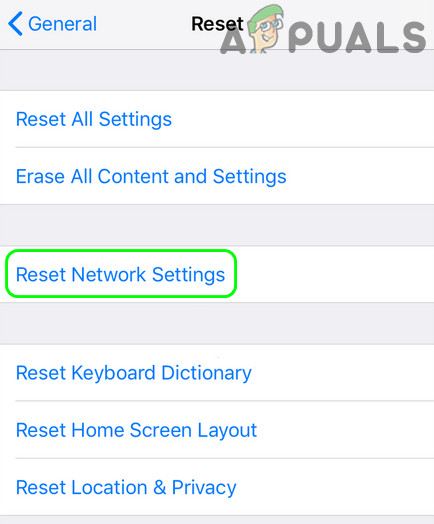
Tap on Reset Network Settings on iPhone - After restarting, rejoin your Wi-Fi or set up your AT&T APN again. See if the problem is fixed.
11.2. For Windows PC
- Right-click on the network or Wi-Fi icon and choose Network & Internet Settings.
- Open Advanced Network Settings, then choose Network Reset.
- Click Reset Now and confirm the action.
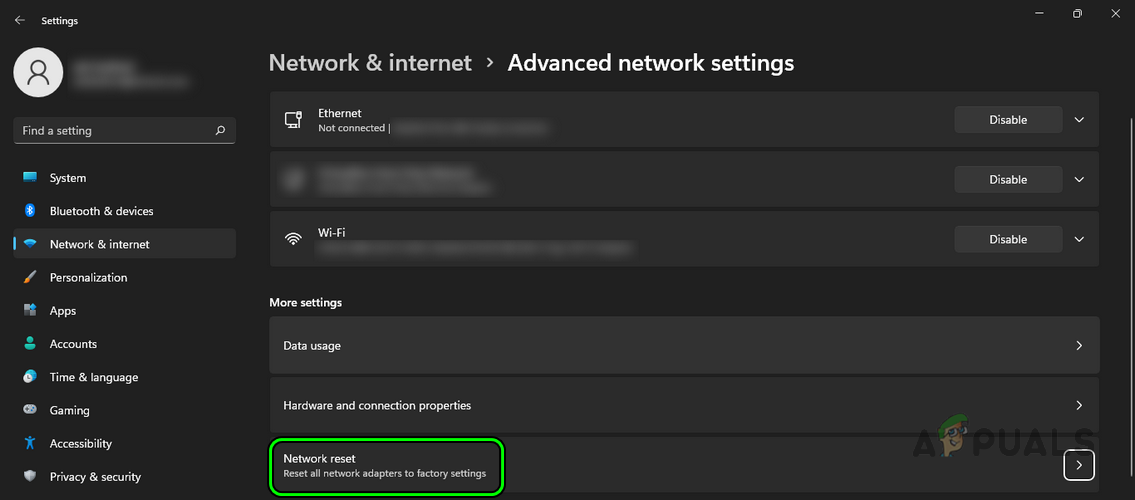
Open Network Reset in the Windows Settings - Restart your PC and reconnect to the AT&T Internet. Check the connection.

Click on Reset Now in the Windows Network Settings - If it still doesn’t work, make sure the default gateway on your PC matches your router’s IP address, then test your Internet again.
For issues on a car (such as a Nissan), try resetting the car’s location settings. On a Mac, you can try renewing the DHCP lease in Network Preferences.
12. Reset the Router to Factory Defaults
If your router’s firmware is storing conflicting or incorrect data from AT&T, resetting it can fix many Internet issues.
- Find the router’s reset button, press and hold it for at least ten seconds.
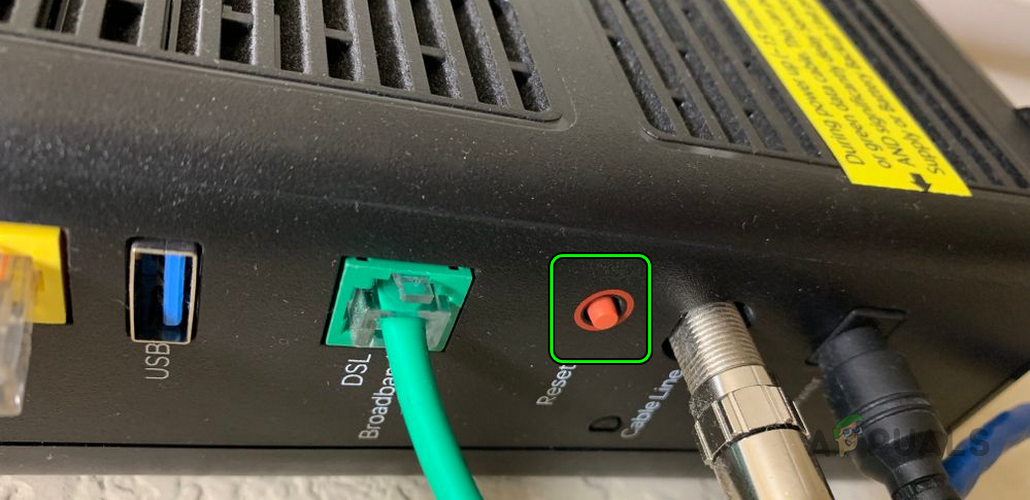
Reset the ATT Router to Factory Defaults - Release the button and wait for the status lights to come on.
- If the “Service” or Broadband light is solid green, your reset worked.
- Set up your router. Remember, Wi-Fi routers will have default network names (SSID) and passwords (often written on a sticker under the router).
- If it didn’t help, unplug the power for 30 seconds, plug it back in, then hold the reset button again for 90 seconds.
- Once it’s done, set up your router using AT&T’s instructions, then test your connection.
13. Reset the Device to Factory Defaults
If one device (like your phone) can’t get online with AT&T, and all other devices are fine, the problem could be inside your device’s software. Resetting it to factory defaults can usually solve this.
Note: Resetting to factory defaults deletes all data. Make sure you back up everything important first.
To reset an iPhone:
- Go to Settings > General > Reset.
- Tap Erase All Content and Settings and confirm.
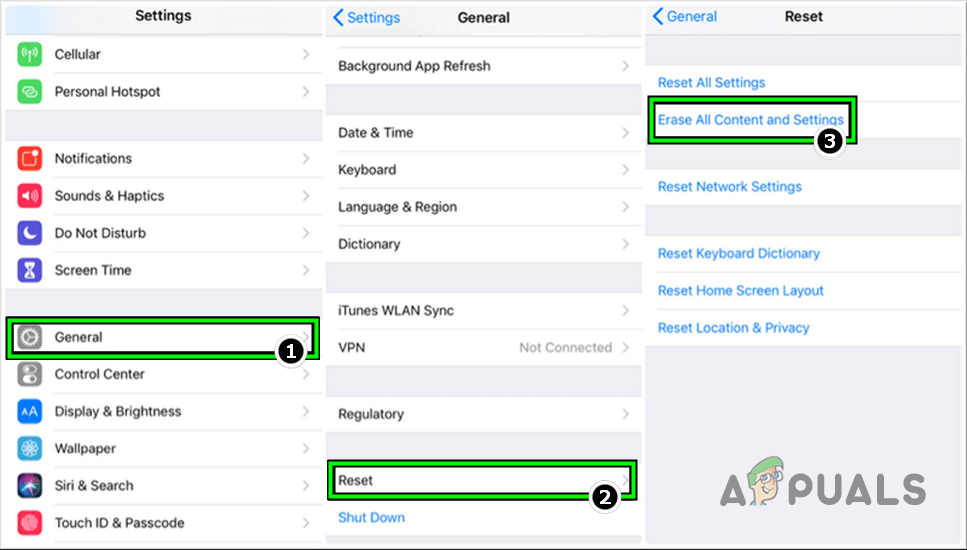
Reset iPhone to the Factory Defaults - Once reset, set up your phone as new. With a fresh setup, AT&T Internet should now work.
If even after this the device doesn’t connect, try using a different router with AT&T. If you’re using a third-party router, you can put your AT&T router in passthrough mode.
If you’re still stuck, your device could be faulty—in which case, try a replacement. For issues outside your control, contact AT&T support. If the problem is not fixed, you can file a complaint with the FCC.
 Reviewed by
Reviewed by 